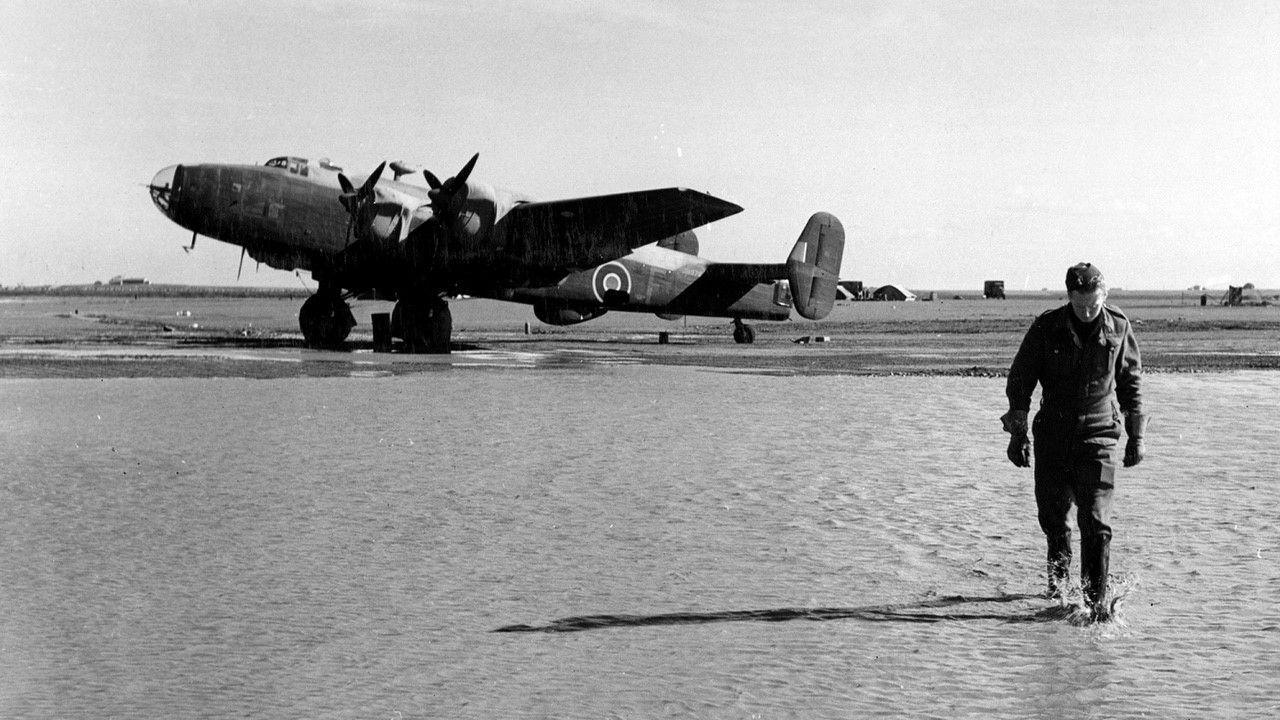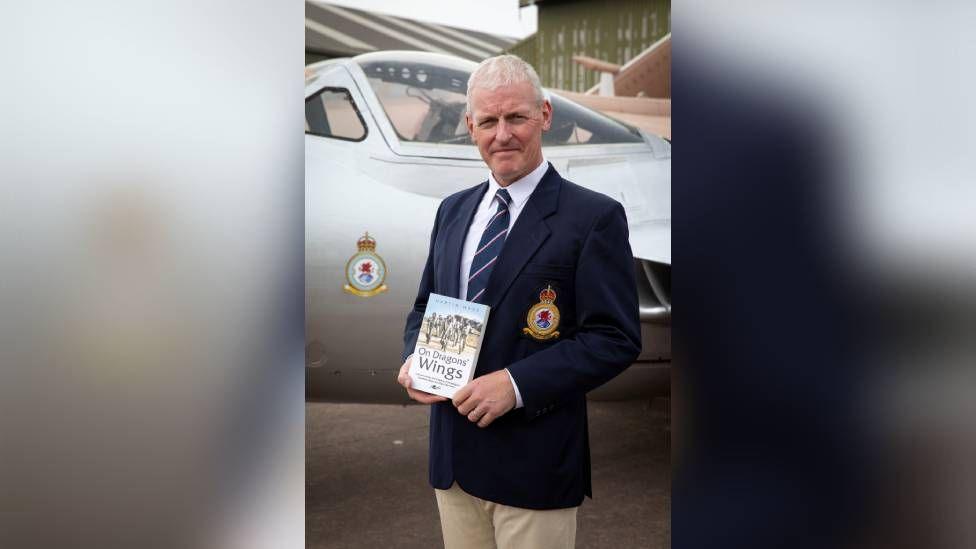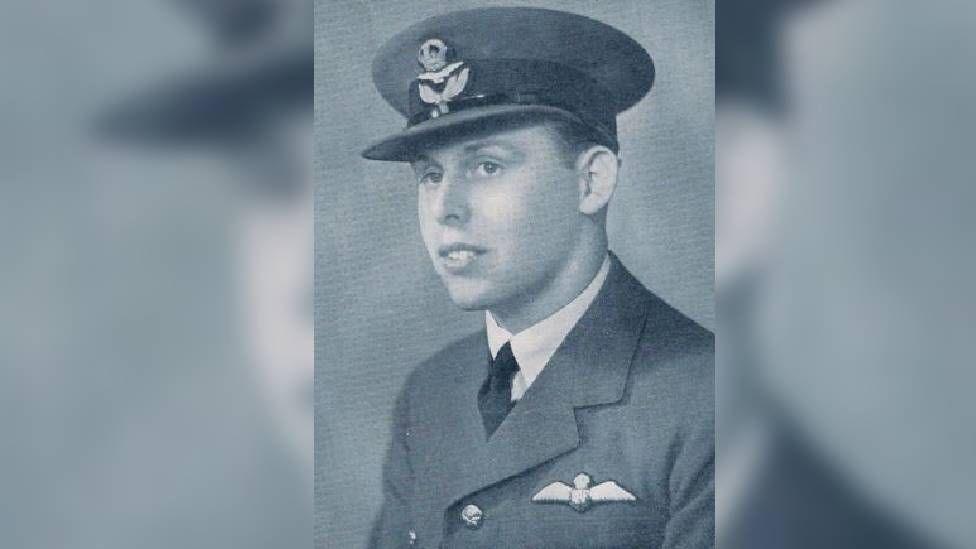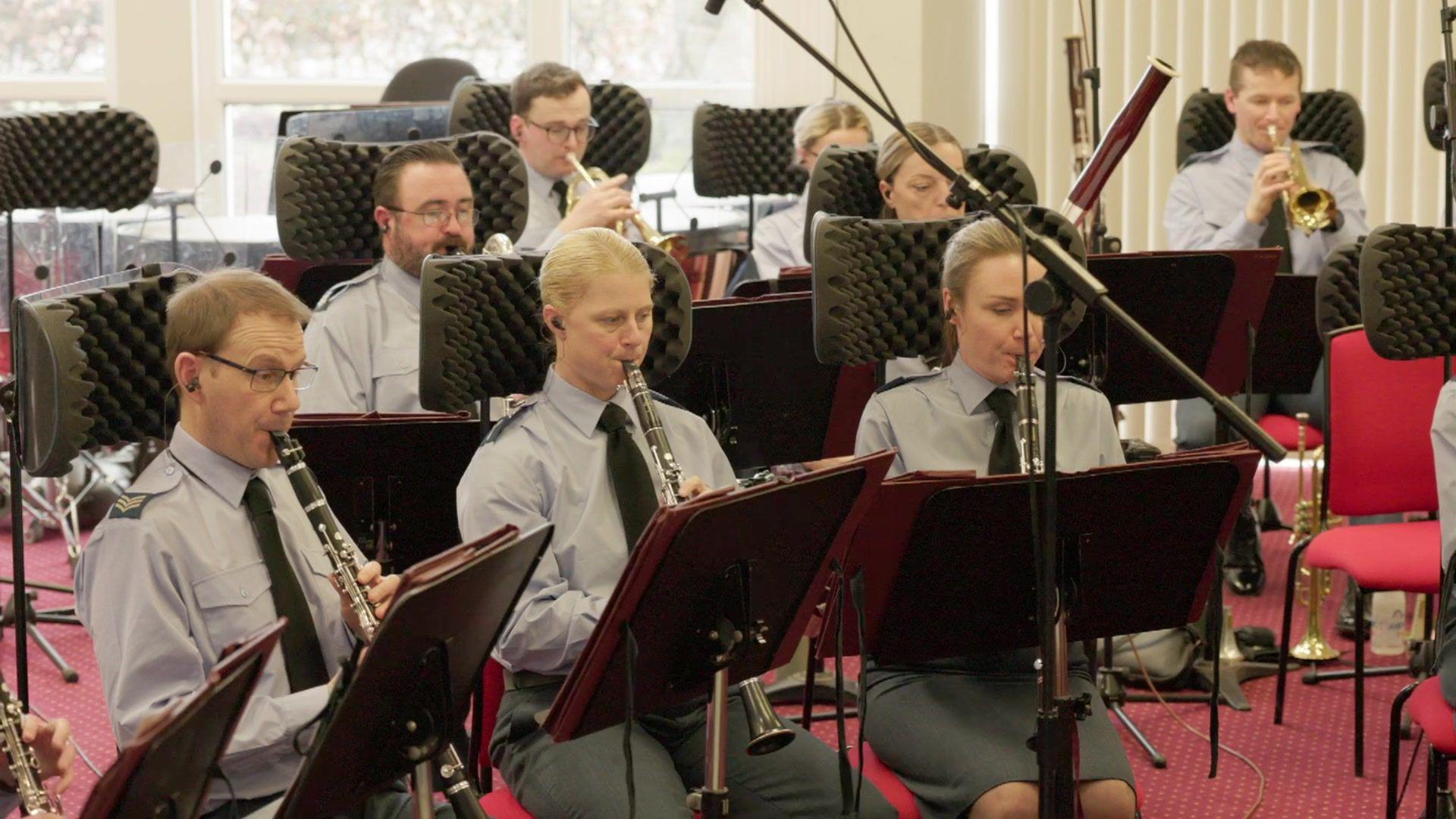Celebrating Wales' only Auxiliary Air squadron

Heavy rain partially flooded the airfield in March 1944
- Published
A century ago, as the aftermath of World War One brought into sharp focus the importance of air power in conflicts, the government set about forming the Auxiliary Air Force.
The Auxiliary Air Force, now referred to as the Royal Auxiliary Air Force, recruited civilian air and ground crew who gave up their weekends to train alongside full-time squadrons on operational missions.
By 1937, Wales established its own Auxiliary squadron - Number 614 (County of Glamorgan) Squadron.
Flt Lt Martin Wade author of the first official history of the squadron, On Dragons' Wings, said: “This was no Dad's Army for the RAF, they were expected to be as well trained as the regular squadrons, and fought alongside them in battle.
“The only difference being that Auxiliary personnel were required to wear a letter A on their uniforms.”

Number 614 Squadron at Llandow in 1948, with Squadron Leader Bill Irving, who later took command of the squadron, in the centre holding the dog
Flt Lt Wade added that during the Battle of Britain, the Auxiliary Air Force provided 14 of the 60 Allied squadrons, and claimed 30% of all the enemy kills.
However, despite the importance of the Auxiliary Air Force, the force wasn’t an easy club to get into – at the beginning at least.
“In the early days, before World War Two, pilots were expected to be already trained in their various disciplines, or at least have the means to pay for their own training.”
According to Flt Lt Wade, a pilot’s licence was about £96 in 1930, which is about £7,000 in today’s prices.
“This obviously led to the creation of something of a gentleman officer class, and excluded many other able men who lacked the means to pay their own way,” he added.
The Welsh squadron, however, was different. Its first Commanding Officer, Richard Cadman insisted that anyone with more than £50 a year unearned income couldn’t join.

Martin Wade with his book On Dragons' Wings
One of Number 614 Squadron’s early pilots was Norman Merrett, from Michaelston-le-Pit in The Vale of Glamorgan.
He’d learnt to fly as a hobby at Cardiff Flying Club, which was based alongside Number 614 Squadron at Pengam Moors, the site of the original Cardiff Airport.
He joined 614 after they formed on 1 June, 1937.
The Number 614 Squadron was deployed to Scotland to defend against a potential German invasion via a northern route. In August 1940, during a training exercise, his Lysander plane collided with another aircraft, resulting in his death.
Flt Lt Wade said: “His father was heartbroken, but had to put that grief to some use.
“He rallied the community into raising £5,000 for a Spitfire, the smallest community to do so during the War.
“In the accompanying letter with their donation, he wrote: ‘I cannot provide you with another gallant son. The one who has gone was my only. But I want you to accept, from the village of Michaelston-le-Pit, the enclosed cheque’.”

Flt Lt Norman Merrett passed away during a training exercise in 1940
As the risk of invasion diminished, Number 614 Squadron was redeployed, first to the North African Front and then as part of the effort to push the Germans back into Europe via Italy.
From there, they flew pathfinder missions.
614 was the only Royal Auxiliary Air Force squadron selected for that perilous task, which involved missions over not only Italy but also Central Europe and the Balkans.
Their role required them to fly in first while attracting the heaviest anti-aircraft fire, dropping flares that guided the following bombers to their targets.
It was on just such a sortie that Flight Sergeant John Evans from Caerphilly lost his life.
Flt Lt Wade said: “He was on his first operational flight on the night of 21 August 1944, and would have been under training with a more experienced bomb-aimer.
“Flying in a Handley Page Halifax, he would have been anxiously searching for his target - the Szony oil refinery about 45 miles north-west of the Hungarian capital, Budapest.
“They laid their markers and headed for home. Then a shout came over the intercom as a night-fighter was spotted.
“The pilot put the heavy bomber into a dive to escape but shells struck the lurching Halifax and ignited its oxygen system.
“The Flight Engineer, Wireless Operator and the Navigator all escaped, but the rest of the crew, including Flt Sgt Evans, perished as the burning plane crashed near the village of Bakonybank west of Budapest.”

80 people died during the Llandow Air Disaster in 1950
One member of Number 614 Squadron who might have felt indestructible was Flying Officer Bill Irving from Cwmbran. He had already survived rowing himself back from Dunkirk in a lifeboat and walked away unscathed when his Bisley Bomber was shot down behind enemy lines over Tunisia in 1942.
He continued to serve until 1950, having taken command of the squadron in 1946. However, on 12 March, 1950, the Avro Tudor airliner in which he was flying on its return from the Ireland vs. Wales Five Nations match with his friends, crashed at Llandow airfield.
His was one of 80 deaths that day, making it the worst British aviation disaster at the time. Fittingly, members of his own Number 614 squadron were the first on hand to lead the rescue efforts.
In more recent times, Number 614 Squadron has remained a vital part of RAF operations. They played a key role in air defence plans against Soviet nuclear bombers and later became the first Royal Auxiliary Air Force squadron to be equipped with Vampire jet fighters.
Reformed in 2014, 57 years after their disbandment, they now support RAF operations both domestically and internationally, including providing support to the NHS in Wales and across the UK during the pandemic.
Events commemorating the Royal Auxiliary Air Force centenary will continue throughout 2024.
Related topics
- Published19 May 2024
